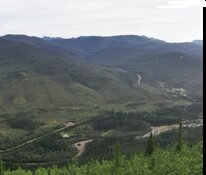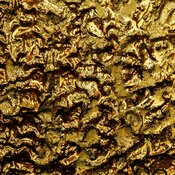The Mining Report: What percentage of Peru's known precious metal base resource reserve is under active development?
Ricardo Carrión: There are many large projects currently in development in Peru by companies such as Southern Peru Copper Corp. (SCCO:NYSE), Anglo American Plc (AAUK:NASDAQ), Chinalco [Aluminum Corporation of China Limited] (ACH:NYSE), Minmetals Resources Ltd. (1208:HKSE), Newmont Mining Corp. (NEM:NYSE) and Compañia de Minas Buenaventura (BVN:NYSE; BUE:BVL). There are also projects on hold for the moment because of social issues. The bottom line is that about 60% of the precious metals resource base is active, and there are a substantial number of projects waiting in the pipeline.
TMR: At the governmental level in Peru, what policy and economic changes are positively affecting mining operations?
Alberto Arispe: A year or so ago, the administration of Peru President Ollanta Humala began accelerating the process of permitting mining operations. What makes this interesting is that Humala won the 2011 national elections on a very anti-mining platform. The market was quite scared of what might happen in Peru. The Humala administration changed the tax regime for mining companies; it slightly increased royalties and taxes. This was viewed positively by the market, which had feared a much higher increase. Then there was a period during which the government was neutral on the mining industry.
"Sierra Metals Inc. is an excellent example of a company with production plus exploration catalysts for the market in the near term."
But toward mid-2012, the administration in Lima began to implement a series of reforms that make the permitting process much more efficient. This was in response to the huge Conga project being paralyzed by protests from the locals. The government is now much more active in mediating the conflicts surging between the mining companies and the local communities. For example, the government is investing a lot of money and roundtables to change anti-mining politics. A clear and good example is the intervention of the government to support the Cañariaco projects, currently in hands of Candente Copper Corp. (DNT:TSX; DNT:BVL). A result of this negotiation is the establishment of an S/.140 million (S/.140M; around $50M) fund to develop the economy in the project area.
Another junior player that benefitted from this new approach is Southern Legacy Minerals Inc. (LCY:TSX.V). The government will not only provide funding for the development of the communities around the mine but also will take charge of most of the environmental liabilities created by informal miners and previous operators.
TMR: Are those volatile local issues environmental issues or wage/labor issues?
AA: Some of the local leaders are environmentalists, but in my opinion, the problems are mainly political. The local leaders gain popularity and votes by saying that they are defending the local community and the environment against the abusive mining companies. They say that there is environmental contamination. But the people of Cajamarca, which is where the Conga project is, are becoming increasingly distressed that Cajamarca is one of the few regions in Peru that is not growing economically. It is one of the two poorest regions in Peru, in fact. Because of the mining industry, other regions have been able to reduce their poverty rates. The elections for regional governors at the end of this year are very important for the mining industry: A lot of pro-mining leaders are running against a lot of anti-mining leaders.
TMR: What are the different directions that the year-end elections could go?
RC: Mining is always the first item on the agenda of candidates running for president of a regional government. As you know, controversial items always are given more weight during campaigns and mining is one of them. In 2011, there was a face-off between a leftist candidate and a candidate from the right. The candidate from the left won and there was a lot of political and market volatility. The worst is over. All of the candidates (or at least most of them) now understand the economic importance of mining.
TMR: Given that there is still opportunity for political volatility, why are you so bullish?
AA: There just was a Peruvian high court ruling in a dispute involving Bear Creek Mining Corp. (BCM:TSX.V), which is a Canadian junior company with assets in southern Peru in Puno. In 2011, there was a revolt in Puno over Bear Creek's Santa Ana project and the local communities blocked the project. The police killed protestors. It was a disaster. President Alan García took the license for the project away from Bear Creek.
"Trevali Mining Corp. is one of the few companies with real exposure to zinc."
Bear Creek's stock dropped more than 50%. But the company stayed alive because during this time, Bear Creek was able to keep working its Corani project, which is bigger than Santa Ana. Now the courts have ordered the government to restore Bear Creek's mining license.
In Peru, mining investments represent nearly 12% of GDP. Mining represents 30% of governmental revenues and 60% of exports. The government needs this money from the mining industry to continue with its social programs. That is why it has turned more friendly to the industry. All of us want the government to be more proactive and accelerate permitting to get the mining industry moving faster.
TMR: We have talked in the past about Trevali Mining Corp.'s (TV:TSX; TREVF:OTCQX; TV:BVL) Peruvian operations. Its stock price has responded well of late to a new financial arrangement that reduces its debt load. How does that affect the outlook for Trevali's Santander mine in Peru?
"In Peru, mining investments represent nearly 12% of GDP. Mining represents 30% of governmental revenues and 60% of exports."
RC: The focus of Trevali's management is currently on developing its Canadian properties, specifically the Caribou project in New Brunswick. Trevali just released the preliminary economic assessment (PEA) for the Caribou mine, and the market has responded nicely. Trevali is one of the few companies with real exposure to zinc. Most of the analysts in the market are very bullish on zinc today because low supply is projected for the next five years, which will boost the price, of course.
We feel that Trevali's stock remains undervalued, however, because of the strength of the Santander mine in Peru. It is expected to produce around 10 million tons of material—7% zinc. It is positioned to go from 2,000 tons per day to 4,000 tons per day during the next two years. And Trevali is exploring additional properties in Peru.
TMR: Does Trevali have competitors in Peru?
RC: Peru lists a lot of polymetallic companies. Trevali, however, enjoys a dual listing in Canada, as well as in Peru. And Trevali's Peruvian liquidity is excellent. It does have zinc competitors in Peru, but these are only locally listed companies. The only comparable company is Sierra Metals Inc. (SMT:TSX). Sierra has the benefit of having a well-known polymetallic asset that has been in operation for decades, the Yauricocha mine, which is owned through the subsidiary and locally listed company, Mincor. In Mexico Sierra operates the Cusi and Bolivar mines. Those mines have a great history in terms of silver production. We also overweight the benefit of having a geographical diversification—Peru and Mexico.
Sierra has put a lot of effort and funds to improve these operations. In the case of Yauricocha, it is developing a 5.5 kilometer tunnel that will benefit the current production. The completion of this work will occur sometime this year. One aspect to take into account is that the subsidiary is valued at a higher level than the parent company. Mincor currently has a market cap of $260M and Sierra's is $246M. In the case of Bolivar, the only pending item is to connect the mine to the national grid. This event can boost the production from 2,000 tpd to 2,500 tpd. Regarding Cusi, we see significant potential, mainly because Sierra will allocate this year US$8.5M in exploration and mine development, the largest investment scheduled by Sierra in 2014. As a matter of fact, we witnessed good results early this year with the discovery of a high-grade zone named Azucarera. This demonstrates the aggressive strategy that the company is following. We were satisfied after the site visit to these mines, and it's important to remember the great potential on the exploration side. Here we have an excellent example of a company with production plus exploration catalysts for the market in the near term.
TMR: I see that Candente Copper, which you follow, has acquired Cobriza Metals, which resulted in a share dilution. How are Candente's prospects in Peru shaping up?
RC: The acquisition was a good move for Candente Copper in Peru because Cobriza has $7M cash to deploy. Candente Copper has several well-advanced projects, and it needs additional funding to complete a feasibility study for its Cañariaco project, which is a very large copper project.
The problems with the local community that Candente faced in Peru last year are almost over. Regional elections will be held during the last quarter of this year. Investors are waiting to assess the mood of the new regional government where Cañariaco will operate. It is a big operation with 9 billion pounds of copper in the ground that can be exploited during the next three decades. As I mentioned before, the national government is supporting Candente by spending S/.140M for the improvement of the local economy. The government is also trying to mediate conflicting interests between the firm and the local people through roundtables. The next months will be key for Candente considering that it is almost done with the studies. The next milestone will be the application for the environmental impact assessment.
TMR: Trevali and Candente have recently undergone stock dilutions. Is there a trend for stock dilution in firms focused in Peruvian properties?
RC: A dilution that increases cash flow speeds up the development process, which is fine. A properly executed dilution can be healthy. Sometimes when investors hear the word dilution, they panic. But once they grasp the reasoning behind the dilution, the share price stabilizes.
TMR: What other companies do you like in Peru's junior environment?
RC: There are many well-developed, largely derisked assets that are undervalued in Peru because of the 2013 crisis. For example, Minera IRL Ltd. (IRL:TSX; MIRL:LSE; MIRL:BVL) is in the final stage of financing the construction of its Ollachea project—a 2 million ounce gold project that will generate 100,000 ounces of gold per year for the next 10 years. And Minera's market cap is only $50M. Once the financing is out on the table, Minera will be an excellent pick for investors.
TMR: Is Minera financing the project by selling shares or taking on debt or a combination?
RC: Minera's financing structure includes equity and debt financing. That is a typical strategy at this stage of development.
TMR: What other companies do you like in Peru?
RC: Sulliden Gold Corp. (SUE:TSX; SDDDF:OTCQX; SUE:BVL) has the Shahuindo project in the north of Peru. It has been quietly advancing the permitting for construction. The market was expecting a disclosure soon on how Sulliden plans to finance the project via its credit line from Credit Suisse and Barclays, but we all were surprised with the recent deal with Rio Alto Mining Ltd. (RIO:TSX.V; RIO:BVL). Now we will see one single operation, combining Shahuindo with Rio Alto's oxide project, that can potentially achieve 300,000 ounces of gold per year in the next two or three years.
The deal occurred one day after two other junior companies announced their merger process: Southern Legacy and Regulus Resources Inc. (REG:TSX.V).
TMR: Is a portion of Sulliden's funding coming from within Peru?
RC: In the construction stage, companies typically go to international banks, Canadian banks, South African banks, European banks, Australian banks. There is a reason behind that. In Peru, there is just not much of a banking culture for supporting the last phase of a mining project, which is the project-finance stage. Banks in Peru tend to be more conservative than in other parts of the world. The Canadian market is much more sophisticated than the Peruvian market. That is why Peru is a good niche for Canadian financial institutions interested in resource development. In this particular case, the funding can now find an interesting structure considering that Rio Alto has a nice balance sheet and cash flow.
TMR: Do you have other companies that you like in the junior space?
"The elections for regional governors at the end of this year are very important for the mining industry."
RC: Panoro Minerals Ltd. (PML:TSX.V: PZN:FSE; PML:BVL) has 13 properties in Peru and it is a top pick when it comes to a pure junior copper play operating in a mining friendly zone of Peru. Panoro will release the PEA midyear for Cotabambas and also for its Antilla project. The company's market cap is below $60M, despite holding some very decent size projects. That valuation does not make sense when you see a resource of 7 billion pounds of copper equivalent. Also remember that the largest transaction ever held in Peru, the selling of Las Bambas, occurred in the neighborhood of Cotabambas.
TMR: Any other gold miners for us to watch in South America?
RC: Rio Alto Mining has producing gold assets and it has a new copper project in the works. It will release a bankable feasibility study on that project early next year. When gold prices go up, it will thrive.
TMR: Rio Alto has extended the life of its main mine in Peru, although the grade has been reduced. Is there a future for mines that are coming to the end of their high-grade life?
RC: Grade reduction is a general trend in the market. Grades are simply not as high now as they were 10 years ago. There are still mines that have high grade and low cash costs, but only a few. The new trend is to produce at lower grade and to manage the costs. Rio Alto lowered its cash cost and kept a good margin intact, even though it is slightly lower.
TMR: Any other companies?
RC: Luna Gold Corp. (LGC:TSX; LGC:BVL) has a Brazilian property that is in the process of increasing production by the end of this year. The founders of Luna Gold are mainly Peruvian groups, so the company is also listed in Peru. Luna has recently changed managers. The new CEO is more focused on accelerating the "short-term" ramp up. It is a good play for gold investors who want geographical diversification. Although the exploration potential in Luna is tremendous, for the company, growth is supported more by financial decisions than by an increase in the resources. I think few companies in the world are in this position. If gold price recovers, then Luna can easily grow.
TMR: Thank you for your time today.
AA: You are welcome.
RC: Thank you, Peter.
Ricardo Carrión is the managing director for capital markets and corporate finance for Kallpa Securities in Lima, Peru. He served as a senior analyst of Banco de Credito in the areas of corporate banking, corporate finance and capital markets and was an adviser to Lima's Stock Exchange. Carrión holds a bachelor's degree in business administration from Universidad de Lima with specialization in finance and capital markets.
Alberto Arispe is CEO of Kallpa Securities SAB, a Peruvian brokerage and boutique investment house. Previously, he was a vice president of emerging markets institutional equity sales at Fox-Pitt Kelton. Arispe has more than 18 years of experience in capital markets. He has a Master of Business Administration from the Stern School of Business at New York University and a bachelor's degree in economics from the Universidad Catolica del Peru. He is a professor of finance at Universidad de Lima.
Read what other experts are saying about:
Want to read more Mining Report interviews like this? Sign up for our free e-newsletter, and you'll learn when new articles have been published. To see recent interviews with industry analysts and commentators, visit The Mining Report homepage.
DISCLOSURE:
1) Peter Byrne conducted this interview for Streetwise Reports LLC, publisher of The Gold Report, The Energy Report, The Life Sciences Report and The Mining Report, and provides services to Streetwise Reports as an independent contractor. He owns, or his family owns, shares of the following companies mentioned in this interview: None.
2) The following companies mentioned in the interview are sponsors of Streetwise Reports: Trevali Mining Corp. and Sierra Metals Inc. Streetwise Reports does not accept stock in exchange for its services.
3) Ricardo Carrión: I own, or my family owns, shares of the following companies mentioned in this interview: Minera IRL Ltd., Panoro Minerals Ltd., Rio Alto Mining Ltd. and Trevali Mining Corp. I personally am, or my family is, paid by the following companies mentioned in this interview: None. My company has a financial relationship with the following companies mentioned in this interview: Rio Alto Mining Ltd., Sulliden Gold Corp., Luna Gold Corp., Candente Copper Corp., Minera IRL Ltd., Panoro Minerals Ltd., Southern Legacy Minerals Inc., Trevali Mining Corp. and Sierra Metals Inc. I was not paid by Streetwise Reports for participating in this interview. Comments and opinions expressed are my own comments and opinions. I had the opportunity to review the interview for accuracy as of the date of the interview and am responsible for the content of the interview.
4) Alberto Arispe: I own, or my family owns, shares of the following companies mentioned in this interview: None. I personally am, or my family is, paid by the following companies mentioned in this interview: None. My company has a financial relationship with the following companies mentioned in this interview: Rio Alto Mining Ltd., Sulliden Gold Corp., Luna Gold Corp., Candente Copper Corp., Minera IRL Ltd., Panoro Minerals Ltd., Southern Legacy Minerals Inc., Trevali Mining Corp. and Sierra Metals Inc. I was not paid by Streetwise Reports for participating in this interview. Comments and opinions expressed are my own comments and opinions. I had the opportunity to review the interview for accuracy as of the date of the interview and am responsible for the content of the interview.
5) Interviews are edited for clarity. Streetwise Reports does not make editorial comments or change experts' statements without their consent.
6) The interview does not constitute investment advice. Each reader is encouraged to consult with his or her individual financial professional and any action a reader takes as a result of information presented here is his or her own responsibility. By opening this page, each reader accepts and agrees to Streetwise Reports' terms of use and full legal disclaimer.
7) From time to time, Streetwise Reports LLC and its directors, officers, employees or members of their families, as well as persons interviewed for articles and interviews on the site, may have a long or short position in securities mentioned. Directors, officers, employees or members of their families are prohibited from making purchases and/or sales of those securities in the open market or otherwise during the up-to-four-week interval from the time of the interview until after it publishes.











































